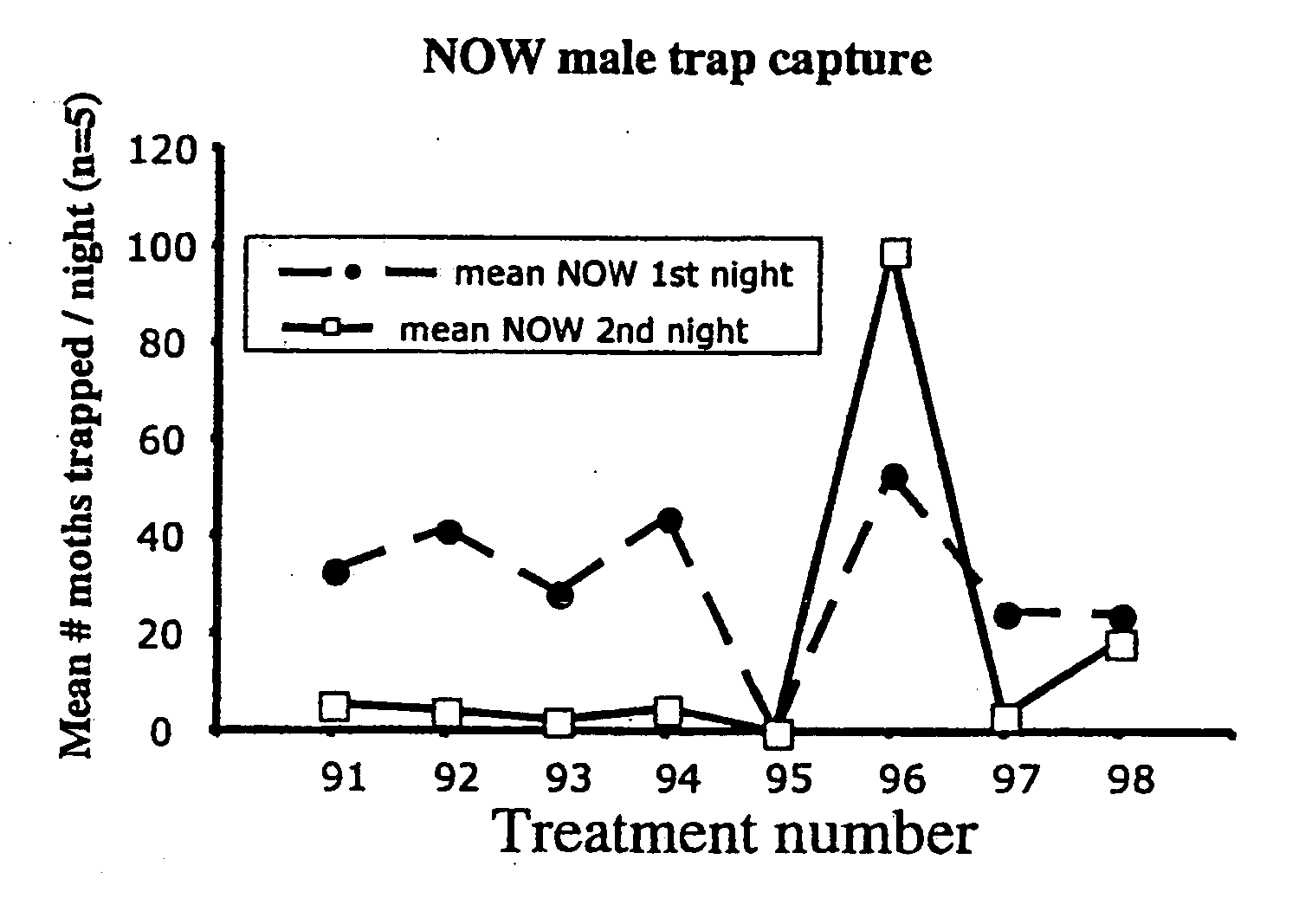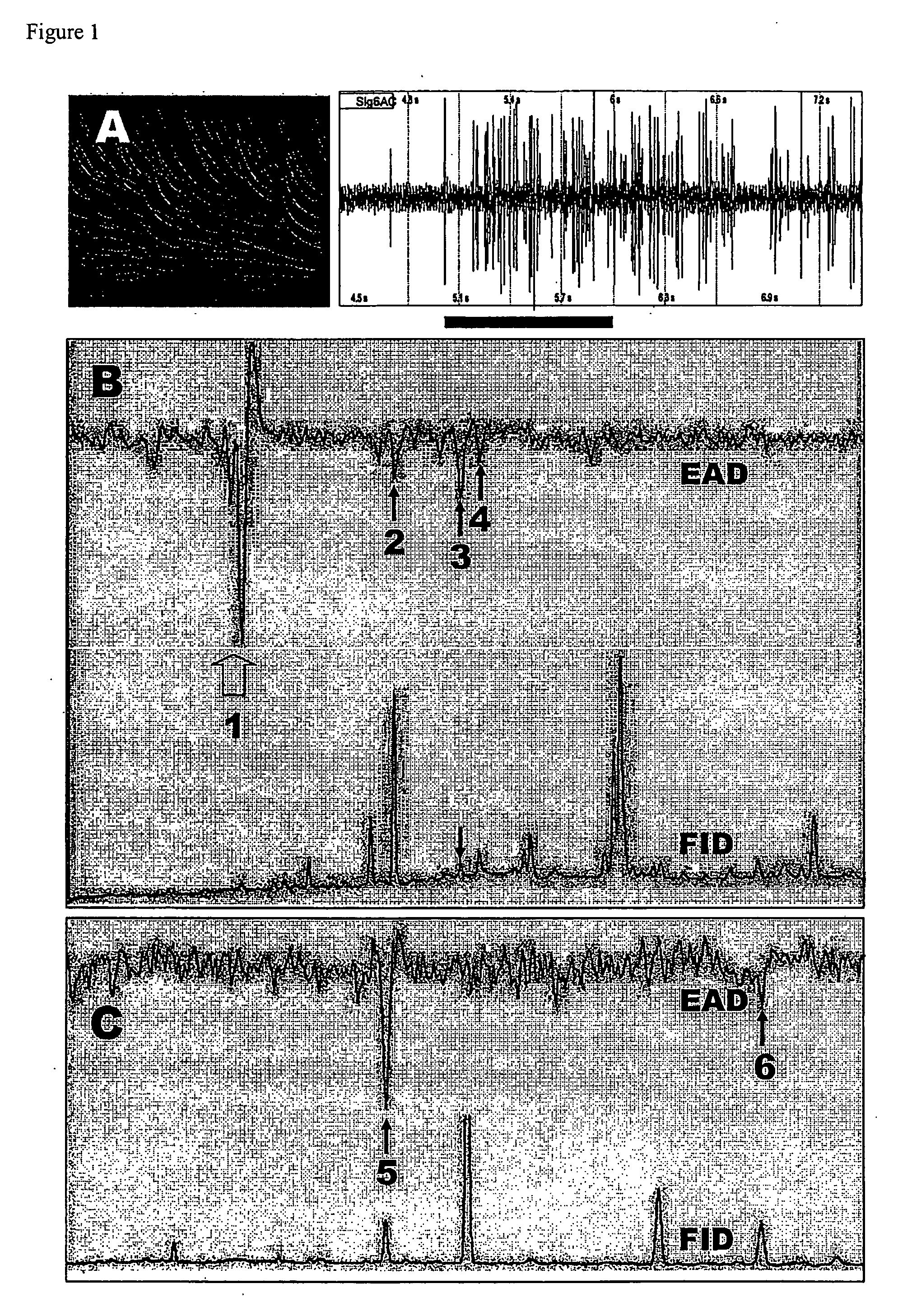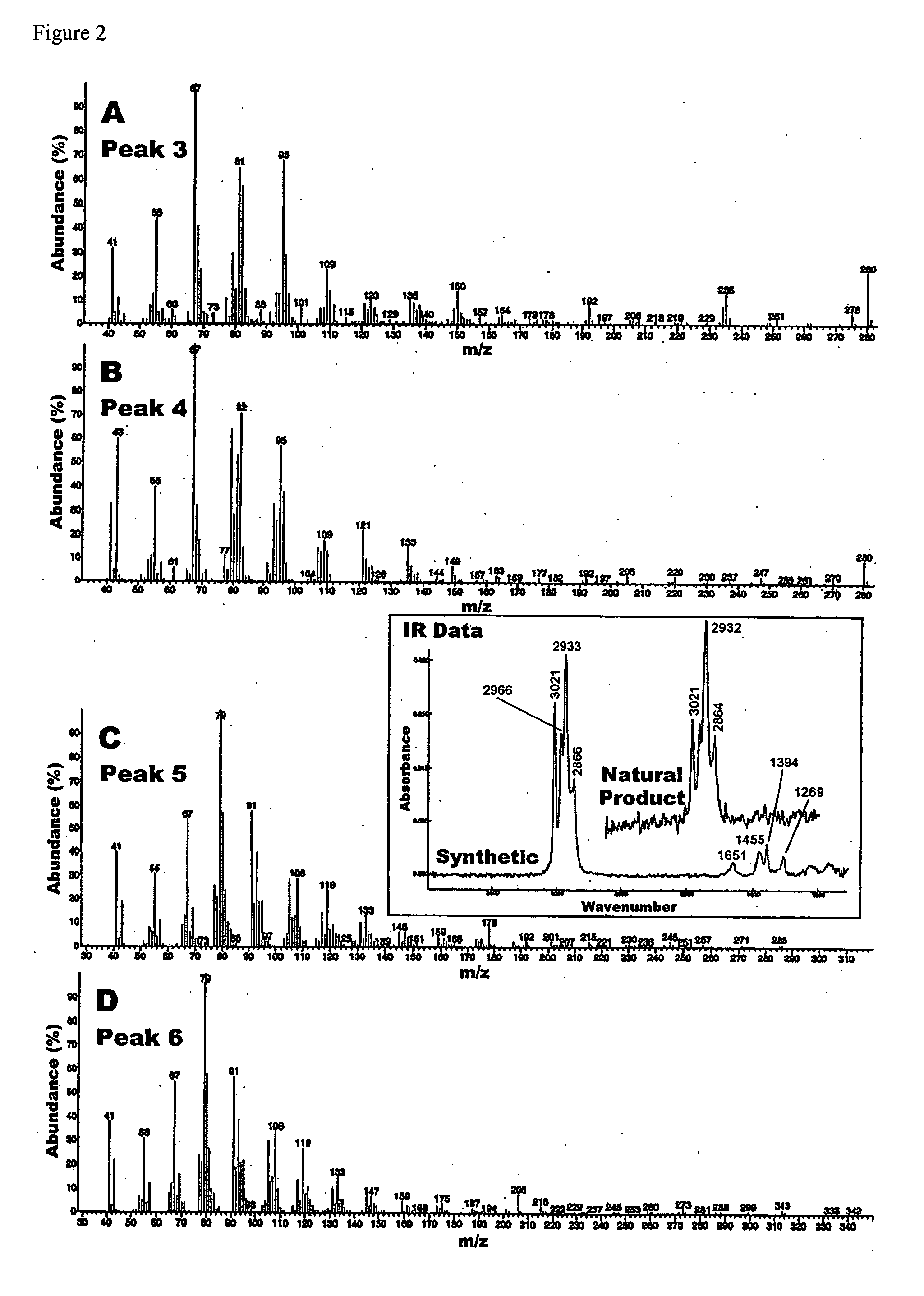Navel orangeworm pheromone composition
a technology of orangeworm and pheromone, which is applied in the field of pheromone composition of orangeworm, can solve the problems of not identifying the full pheromone system in the applicative field
- Summary
- Abstract
- Description
- Claims
- Application Information
AI Technical Summary
Problems solved by technology
Method used
Image
Examples
example 1
Identification of Natural Pheromone Components
[0057] Insect rearing, pheromone extraction and fractionation. The navel orangeworm colony started from larvae collected in Bakersfield, Calif. The larvae were kept in dried and roasted pistachio at 25±2° C., 75±10% relative humidity, and a 16:8 (L:D) photoregime. Adults were transferred to aluminum cages (30×30×30 cm) and kept for 48 h to allow copulation. After the first generation, 20% of the emerged adults were used to maintain the colony. The remainder of the pupae were kept individually in culture tubes (17 mm i.d; 10 cm long). Upon emergence males were used for EAD and SSR and females for gland extracts or trap baits. Pheromone glands of 1- to 2-day-old virgin females were extracted 2 h before photophase for 10 min in glass-distilled hexane and kept at −80° C. until used. Crude extracts were subjected to flash column chromatography on silica gel (60-200 Mesh, Fisher Scientific) by successive elution with hexane-ether mixtures in ...
example 2
(Z,E)-, (E,Z)-, (E,E)-, and (Z,Z)-11,13-Hexadecadienal (1)
[0067] The (Z,Z) isomer can be prepared by a previously published method (Sonnet, P. E. and Heath, R. R., J Chem Ecol 6:221-228 (1980). The (Z,E) isomer was prepared by a the sequence shown in Scheme 1-1. (E)-12-pentadecen-10-yn-1-ol THP was prepared by palladium catalyzed cross coupling of 10-undecyn-1-ol THP (prepared from 10-undecyn-1-ol and dihydropyran) with E-1-iodo-1-butene (Zweifel, G. and Whitney, C. C., J Am Chem Soc 89:2753-2754 (1967); Alami et al., Tetrahedron Lett 34:6403-6406 (1993)). Addition of dicyclohexyl borane across the triple bond followed by hydrolysis of both the borane and THP protecting group gave the desired (Z,E) diene stereochemistry (Brown, H. C., Organic Synthesis via Boranes, John Wiley and Sons, New York (1975)). The alcohol was converted to bromide via the mesylate using conventional methods (Jones, R. A.., Quaternary ammonium salts, Academic Press.San Diego (2001)). The Grignard reagent of...
example 3
Ethyl (Z,Z)-11,13-Hexadecadienoate (3)
[0068] (Z,Z)-10,12-Pentadecadien-1-ol can be prepared using the appropriate starting materials using a previously reported reaction sequence (Sonnet, P. E., Heath, R. R., J Chem Ecol 6:221-228 (1980) The alcohol was converted to bromide (Scheme 1-3). The Grignard reagent of the bromide was prepared and quenched with excess diethylcarbonate (Whitmore F. C. and Loder, D. J., Ethyl, Naphthoate, In: Blott A H (ed) Organic Syntheses; John Wiley & Sons, New York, pp. 282-283 (1943)) to give the desired ester 3.
PUM
 Login to View More
Login to View More Abstract
Description
Claims
Application Information
 Login to View More
Login to View More - R&D
- Intellectual Property
- Life Sciences
- Materials
- Tech Scout
- Unparalleled Data Quality
- Higher Quality Content
- 60% Fewer Hallucinations
Browse by: Latest US Patents, China's latest patents, Technical Efficacy Thesaurus, Application Domain, Technology Topic, Popular Technical Reports.
© 2025 PatSnap. All rights reserved.Legal|Privacy policy|Modern Slavery Act Transparency Statement|Sitemap|About US| Contact US: help@patsnap.com



